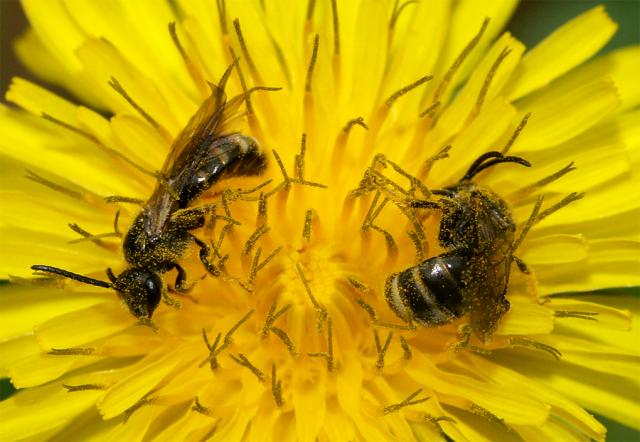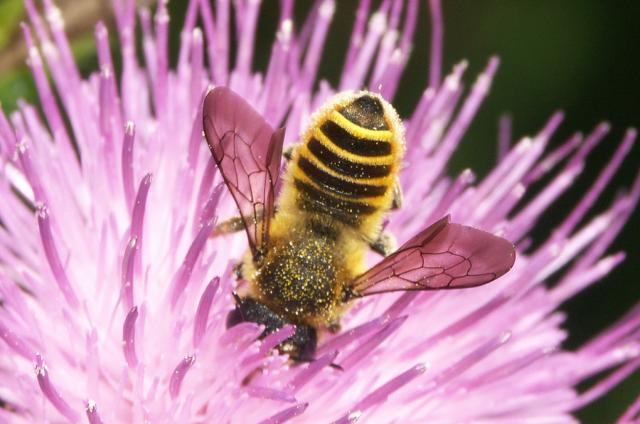- Urbanbees project
- Learn about bees
- Participate
- Download
- Contact
Biology and Ecology
Bees are insects* belonging to the order of hymenoptera (bees, bumblebees, wasps, hornets, ants...).

One thousand species of bee have been recorded in France to this day, 2 500 in Europe and close to 20 000 in the world. The honey bee or domestic bee, is certainly the most well-known bee, but it represents only one species.
* Animals having 6 legs, a pair of antennae, generally 2 pairs of wings and a body divided into 3 distinct parts: head, thorax and abdomen
In contrast to the domestic bee, all the other bees wild and, for the most part, solitary : each female builds her own nest where she lays her eggs. Each egg is enclosed in a larval cell which contains the food* necessary for its complete development. The types of material chosen for nesting differs from species to species. Eighty percent of bees nest in the ground (sandy, clayey...) Others build their nests in hollow twigs or holes in wood and sometimes, in empty snail shells!
* a mixture of nectar and pollen called bee bread
Bees are divided into six families :
Melittidae, Apidae, Megachilidae, Andrenidae, Halictidae, Colletidae*.
* The suffix -idae designates the family, in taxonomic rank

All females have structures for the collection and transportation of nectar and pollen, with the exception of the cuckoo species (a parasite of other bees). Classifiaction depends, in part, on an important criterion: the length of the tongue. In general, short-tongued bees (Dasypodaidae,Melittidae, Andrenidae, Halictidae, Colletidae) look for flowers whose precious liquid is easily accessible, whereas long-tongued bees (Megachilidae and Apidae) visit plants who have deeper corollas which renders access to nectar more difficult.
Certain bees, therefore, have noticeaible preferences for certain flowering plants.
Some videos about bee behaviour.
The truth about bee stings
Only the main social bees species (honeybees and bumblebees) can act defensively, essentially near the hive that they are protecting. They are only dangerous in the case of allergies. Wild bees are calm and for the most part, totally inoffensive (prefering flight to danger).
Moreover bees are not combative, stings are generally a response to an attack.


